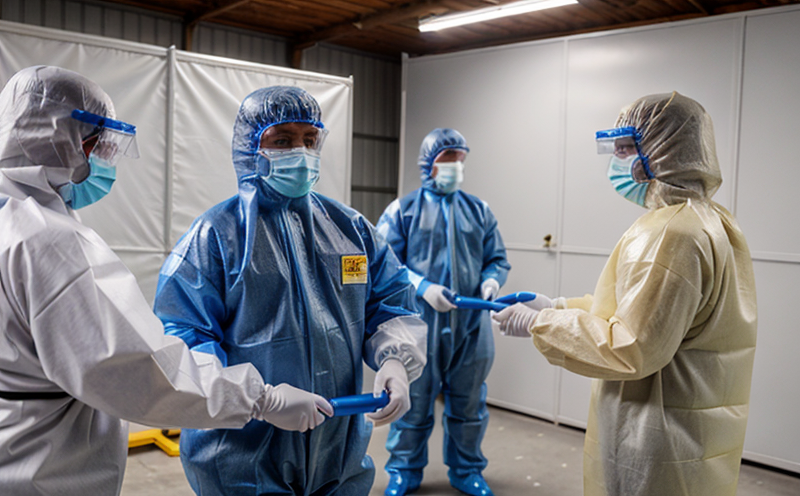Laboratory evaluation of seam integrity in chemical protective suits
The laboratory evaluation of seam integrity is a critical step in ensuring the safety and reliability of chemical protective suits (CPS). These suits are designed to protect workers from various hazardous chemicals, biological agents, and physical hazards. Seam integrity plays a significant role in determining how effectively these suits perform their intended function.
During manufacturing, seams are subjected to high levels of stress that can lead to defects such as holes or tears. These imperfections can compromise the overall protection provided by the suit. Therefore, it is essential to evaluate and ensure seam integrity through rigorous laboratory testing methods. This service ensures that CPS meet stringent quality standards and provide reliable performance in real-world scenarios.
The evaluation process involves several key steps: specimen preparation, testing procedures, data analysis, and reporting. Specimen preparation must be conducted meticulously to mimic the actual conditions under which the suit will operate. Testing is performed using various instruments designed specifically for evaluating seam integrity. Once completed, detailed reports are generated summarizing findings and recommendations.
Understanding the importance of this service goes beyond mere compliance; it directly impacts worker safety. By detecting potential weaknesses early in the production process or during regular maintenance checks, organizations can take corrective actions promptly. This proactive approach helps prevent accidents caused by compromised protective gear, ultimately safeguarding employees' health and wellbeing.
Why It Matters
The integrity of seams within chemical protective suits is crucial for several reasons:
Seams are critical points where different materials come together. If not properly sealed, they can create entry points for hazardous substances.
Even minor defects may allow contaminants to pass through, reducing the suit's effectiveness in protecting against chemical exposure.
Avoiding such breaches is vital because unprotected workers could face serious health risks including respiratory issues or severe dermatological conditions.
Proper seam integrity also contributes significantly towards the durability and lifespan of protective clothing, thus reducing costs associated with frequent replacements.
In summary, ensuring robust seam integrity enhances both occupational safety standards and operational efficiency within industries reliant on personal protective equipment (PPE).
Scope and Methodology
| Test Procedure | Instrumentation Used | Acceptance Criteria |
|---|---|---|
Visual Inspection for Defects |
Magnifying Lens/Borescope |
No visible defects or tears in seams. |
Water Spray Test |
High Pressure Water Spray Apparatus |
No leakage when subjected to specified water pressure for a given duration. |
Tensile Strength Testing |
Universal Testing Machine |
The seam must withstand the required tensile force without rupture. |
Flame Resistance Test |
Flame Test Apparatus |
No ignition or flaming after exposure to flame for a specified period. |
The above table outlines the primary test procedures used in evaluating seam integrity alongside the instrumentation required and corresponding acceptance criteria. Each step contributes uniquely to confirming that seams are both structurally sound and capable of withstanding typical operational stresses.
International Acceptance and Recognition
The ISO 16713:2013 standard provides guidelines for the design, manufacture, testing, and use of chemical protective clothing. Compliance with these standards ensures consistent quality across different manufacturers.
ASTM F1956-21a specifies methods for determining seam integrity in chemical protective garments using water spray tests. This standard is widely adopted by North American companies.
EN 374:2018 sets forth requirements for protective gloves against chemicals, which includes considerations related to seam integrity as part of overall garment design and construction criteria.
These international standards ensure that seam evaluations align with global best practices. Adoption by regulatory bodies and industry leaders underscores their importance in maintaining high safety standards worldwide.





